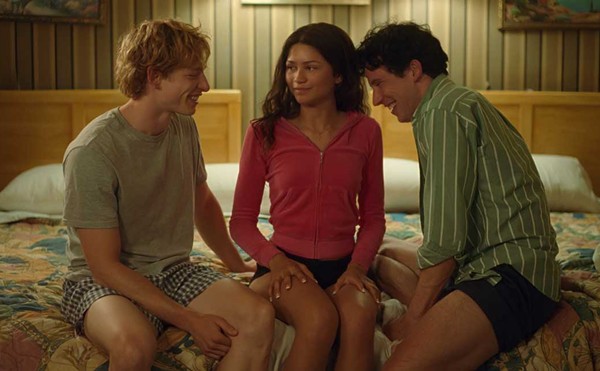Knowing a little more about them will come in handy when you’re faced with a buzzing noise and only a flyswatter to defend yourself. Here are three of the most commonly seen – or unseen – summer bugs.
Buzz off
According to Tom Ellis, an entomologist at Michigan State University, mosquitoes are the biggest problem in Michigan’s summer months.
"The larvae live in fresh water areas, so as long as Michigan remains the Water Wonderland, we will have mosquitoes," says Ellis.
He should know. He wrote the book What’s Bugging You? (Michigan State University Press, $7.95, 74 pp.), in which he profiles more than 70 species of pests that we encounter every day at home, in our backyards and anywhere we go to have fun.
According to Ellis, there is a lot to learn about buzzing, bloodsucking insects. Of about 150 mosquito species in the United States, 30 are found in Michigan. Most lay their eggs in or near water, even around your backyard birdbath or pond.
How can you protect yourself from a critter that is at best annoying and at worst a dangerous carrier of disease?
You can use mosquito repellent. Or, you can get a bug zapper, but Ellis has one caveat about those glowing lights. "They do kill mosquitoes. However, the UV light attracts more mosquitoes than it kills. In turn, more ... mosquitoes will be buzzing around looking for a meal."
You can also go straight to the source: "Eliminate mosquito breeding areas such as clogged gutters or stagnant birdbaths," Ellis recommends.
Scrub a grub
If your lawn is busy turning brown while you’re slapping at mosquitoes, you may have an infestation of grubs. The larvae of various beetles, they look like white, C-shaped worms and are up to an inch long.
According to Mary Wilson, a horticulturist who answers the plants and pests hotline at MSU’s extension office, most of the calls she receives are about these lawn-chomping pests.
"European chaffer grubs turn a lawn brown in a short period of time. It shows," says Wilson, adding that not every insecticide works on grubs in the same season. "Diazinon or Oftanol are good products to use in spring, but once grubs are out in the summer, people should, for instance, start using Grub-X." (For environmentally friendly pest-reducing alternatives, see our related story, "Bug control.")
Up the ant-e
Maybe you and your lawn are fine. But is your house safe? Various local exterminating companies agree that carpenter ants are the biggest problem in the category of household invading pests; specifically, the black carpenter ant. These creatures are big for ants, ranging up to three-fourths of an inch long. Apparently they get that way from chewing on wood structures. Gene White, director of education and training at the Rose Exterminator Company in Troy, says prevention is the best control strategy. "Make your home solid, seal openings, eliminate water damage and remove dead wood structure," he says.
Once you’ve got ‘em, they’re hard to get rid of because their nests are hard to find, and they’re not partial to any particular bait – not even wood chips.
"One day a carpenter ant will eat a potato chip and another day he will feed himself with a dead carpenter ant," says Marian Morton, president of Pest Control Supply in Detroit. "A chemical insecticide is still most used to get rid of this annoying bug. It is more invasive on the environment, but people don’t want to pull their walls down to find a nest."
Nicole Bosch is a Dutch freelance writer now living in Detroit. Send comments to [email protected]




